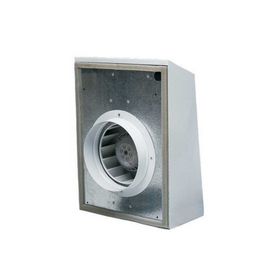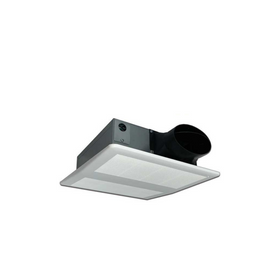Camille LeFevre

Bathroom Fan
Bathroom exhaust fans that have the Energy Star certification are more efficient and produce less noise. They feature high-performance motors, improved blade design, providing better performance, and longer life. They also come with a manufacturer-backed warranty of at least one year.
Energy Star bathroom fans have the following minimum efficacy levels, which is measured in cubic feet of air per minute per watt (cfm/W).
- At low operating speeds, 10-89 cfm, 1.4 cfm/W.
- At high operating speeds, 90-500 cfm (max), 2.8 cfm/W.
Maximum sound levels are also required:
- At low operating speeds, 10 to 139 cfm, 2.0 Sones (a unit of subjective loudness).
- At high operating speeds of 140 to 500 cfm (max), 3.0 Sones.
When installed, these fans should maintain 60% of rated airflow at low speeds, and 70% rated airflow at high speed.
Look for the Energy Star Most Efficient list for ventilating fans for the current year, because the most efficient units on the list are much more efficient than the average. The minimum standard for Energy Star is efficacy of 2.8 cfm/W, but the most efficient on the list are up to 19 cfm/W, a considerable difference. For quietness, look for a maximum Sone level of 1.0. Also, units with variable speed and DC motors are more efficient flexible. And for bathroom fans with integrated light sources, the light sources also meet required Energy Star specifications.</p><p>If you just bought an older house, check where your exhaust duct goes. It must exhaust to the outdoors, and not end early inside any part of the house. If it passes through cold attic space, it's important to ensure that the duct is wrapped in insulation, to reduce condensation of moisture in the duct. And consider installing a timer switch for your fan, so that you can have it run for about 20 minutes after your shower or bath is done, then turn off automatically.
The idea of the 'bathroom' started in the late 1800s in England. Prior to this time, washing was done at a bedside basin or bathing in a steel tub in the kitchen near the stove, where water could be heated. Toilet were located in the outhouse or a chamber pot (a ceramic pot next to the bed).


















